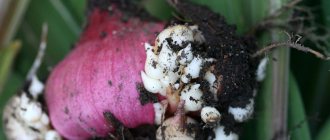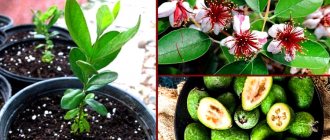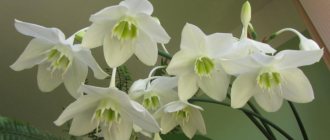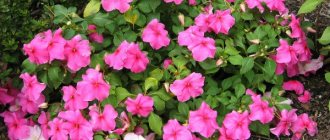Being a representative of the Malvaceae family, abutilon is known to amateur gardeners as a plant that belongs to the perennial shrubs and herbs. It is widespread in Australia and Asia, Africa and America. More than 150 species of this wonderful plant are known.
The second name of the flower is “rope plant”. Varieties grown in natural conditions have coarse fiber. It is used to produce tight ropes and ropes. Florists call abutilon “house maple” because of the special shape of the leaves.
Indoor abutilon is easy to care for, despite the fact that it comes from the subtropics. Favorable factors for it are the abundance of light and warmth. Flowering occurs from April to September.
However, if all the conditions for the plant are met, it will delight its owner with a beautiful bell-shaped color throughout the year.
Types of abutilone
Among the variety of varieties of the abutilon plant, the following types are the most popular:
Abutilon Darwin is a low-growing bush-type flower. Its shoots reach a length of no more than 1 meter. The color has a bell-shaped orange-red color.
Abutilon painted - has thin, small-sized shoots that are soft to the touch. This species is called spotted or striped. It has a golden yellow color with red splashes in the shape of a small bell on a thin stem.
Abutilon grape-leaved is a type of plant with large leaves reaching 16 cm. The color has a round shape. The color scheme is yellow and light shades of red.
Hybrid Abutilon is a plant that reaches a maximum length of 1.5 meters. The color is bell-shaped. The color palette ranges from white to dark shades of red.
Abutilon Suntense is one of the largest varieties. Its maximum size is 4 m. The lilac buds are 11 cm in diameter. This species is quite difficult to grow in a small indoor pot. It will feel great in the garden.
Abutilon Chitendenii (A. Chitendenii)
Like the previous species, this plant, called the Canary tree, has yellow, wide-open flowers. True, the size of the corollas in this case reaches 6–7 cm, and in shape they are similar to hibiscus flowers. The corolla combines five bright textured petals with a reddish or orange spot at the base. The foliage of the plant is rounded-heart-shaped, with a small pile on the back side and a rough front surface.
The abutilon shown in the photo in nature forms a beautiful tree up to 3 meters high; in potted culture it lends itself well to shaping and is grown in large flowerpots. The culture requires a lot of light and good drainage. On summer days, it is useful to take the plant out into the air, where the flowering of abutilon certainly attracts the attention of honey insects.
Care
Keeping abutilone at home will not be difficult even for a novice gardener. The plant loves bright rooms, so it is advisable to place it in a room located on the south side.
The flower requires diffused light. It will give the leaves a rich color. In winter, the flower does not have enough sun. A special phytolamp can replenish.
5. Diseases and pests
In general, abutilon gets sick and is attacked by pests quite rarely - mainly due to improper care or inappropriate conditions. Also, leaves and buds may fall off due to sudden temperature changes and changes in light. It is worth accustoming the flower to any changes gradually - over 7 - 10 days.
Twisting and flying of leaf plates will indicate the presence of a cold draft in the room. The tips of the leaves also curl when there is too much light. In insufficient light, the color of the leaves fades.
↑ Up,
With insufficient ventilation and keeping the air cool and high humidity, powdery mildew appears. Frequent and abundant watering, growing in a pot that is too spacious can lead to root rot. Lack of nutrition contributes to less abundant flowering, dropping of buds and their shredding.
Among the pests, the rope plant can be attacked by insects such as spider mites, scale insects, whiteflies, mealybugs or aphids. Sometimes cyclamen mites appear.
↑ Up,
5.1.Why abutilone turns yellow
The leaves turn yellow mainly when there is a lack of light - in this case, you can move the flower to a brighter place or apply additional lighting artificially. The tips of the leaf blades can dry out and turn yellow if there is insufficient air humidity - this is especially true in the cold season when the central heating is on.
The edges of the leaves dry out and turn brown during prolonged drought. Leaves also turn yellow when grown in alkaline soil or lack of iron in the soil. The situation can be corrected by watering with slightly acidified water and spraying the foliage with an iron chelate solution.
Hot summer days can also cause leaves to turn yellow. The edges of the leaf blades turn yellow due to a lack of an element such as magnesium.
↑ Up,
5.2.Why does the plant shed its leaves?
Leaves and buds often fall off when the earthen ball dries out, as well as when the flower is flooded. A too dry atmosphere also negatively affects the rope plant - its leaf blades become curled and may fall off. Increased air temperatures during the dormant period can lead to leaf shedding. Lack of nutrients in the soil contributes to leaf fall.
↑ Up,
Temperature
Despite its heat-loving nature, the plant is uncomfortable at temperatures above 26 degrees. During the hot summer months, it is recommended to regularly ventilate the room.
Also, the abutilon flower should be protected from possible drafts and sudden changes in temperature. It exists perfectly well at 13 degrees, but at lower temperatures it begins to shed its leaves.
When and how to trim abutilon
Indoor maple flower is a very fast growing plant. Therefore, it requires pruning every spring. Before growth begins to activate, I cut the shoots to a third or two-thirds of their length, it depends on the size of the bushes or trees. Pruning abutilon promotes beautiful and compact crown formation and stimulates abundant and long-lasting flowering . For young shoots, pinching the tops is used. After this, the home maple is transferred to a room where the air is warm and humid.
Watering
Abutilon loves moist soil. Therefore, the process of caring for it includes abundant and frequent watering. For this purpose, settled boiled water is used.
When watering, you should stick to the “golden mean”. If there is insufficient moisture, the plant sheds not only its leaves, but also its flowers that have not yet bloomed.
- Advantages of Gardena gardening equipment
Bathhouse made of 6x6 timber
- Ktenanta - types, cultivation characteristics and instructions for care at home. 110 photos of plants
Too much water accumulates in the pan, which contributes to rotting of the root system and the formation of rot on it. During the winter months, abutilon needs to be watered much less frequently.
In addition to moderate watering, the plant needs to provide moist air around it. It is recommended to spray abutilon leaves periodically with a spray bottle, or place a container of water near the flower pot. Twice a month you need to bathe it in the shower, and also remove accumulated dust on the leaves with a damp cloth.
Caring for abutilone in confined spaces
No distinctive methods of caring for a young growing decorative knee are required. Following the recommendations regarding how to cultivate rope plant, three to four months after the seeds have sprouted, the plant will bloom for the first time.
- Watering the plant
Abutilon loves enough moisture, and when it blooms, it requires frequent, abundant watering. During the period of frost, this will be visible from the wintering conditions: when stored in a warm room, where it will not be less than +15 degrees, the amount of soil moisture is not changed, and if the room is even colder, then it is completely stopped.
If you fail to care for your indoor maple - by watering it too much or drying out the soil - the bush will shed its leaves.
- Air humidity
It is necessary to spray the greenery of the flower with water, preferably warm, in a timely manner. Indeed, due to warm weather and excessive dryness of the air in the room, abutilon will lose its decorative effect - the leaves will wither, dry out and curl into a tube.
This usually happens in winter, because then the rope plant standing on the window is directly close to the heaters, which is very undesirable for any flowerpot in general.
- Soil for growing
Abutilon is picky about soil quality. The soil should be loose and fertile. So, foliage, humus, turf and a little sand are added to the soil. Palm substrate, sold in special stores, is also well suited for the growth of rope plants.
- Lighting
Abutilon in the form of a flowerpot will bloom profusely only when it is constantly exposed to enough light, but this should not be direct sunlight. If there is insufficient lighting, the rope plant will stretch out and bloom sparingly.
In winter, the flowerpot can be placed on a window on the south side of the house, and in summer it can be placed outdoors - on a balcony, veranda, in the shade under trees in the garden.
- Plant pruning
If you start pruning abutilon in a timely manner, it threatens to grow chaotically two meters high. Therefore, in order for the crown to have a beautiful shape and the flower to look neat, in spring and also in autumn the stems need to be cut in half.
In addition, by pinching the tops of only blossoming shoots, it will be possible to transform the plant into a branched bush. By cutting off the branches and leaving only one stem, you get a rope plant in the form of a compact tree.
- Air temperature
It has already been mentioned that indoor abutilon prefers a warm environment, so in summer the air should be warm at a level of +22... +25, and in winter - +12...+15. When the optimal temperature becomes lower and there are drafts between rooms in the house, the rope plant will lose leaves.
- Soil fertilization
During the flowering period, indoor maple needs to be fed once or twice a month - special fertilizers for flowering plants are added to the soil. Even if the rope plant blooms in winter, it should still continue to be fed with nutrients for growth.
- Plant pests and diseases
When the normal conditions for growing abutilone are violated, the plant gets sick, in addition, it is attacked by many pests, such as aphids, scale insects, whiteflies, and red spider mites.
Poor lighting affects the foliage - it turns yellow, its color fades, and the stem becomes deformed - it becomes thin and dried out. The solution would be to move the flowerpot to where more light will fall on it, and you can also trim off very elongated shoots or pin them.
But you shouldn’t overdo it with lighting, since if abutilon is exposed to too much direct sunlight, its leaves will turn yellow, curl, and dry out - in this case, it is important to remove the plant from the sun in time, spray and water it more.
- If abutilon stops blooming
When the young shoots appear, the plant blooms for the first time after three to five months. Sometimes this may not happen. The main reason is the lack of bright sunlight, which abutilone requires at least two hours per day.
Before the plant blooms, it needs to be cut back by half in the spring. This way the branches will grow more abundantly, and this will contribute to the formation of many buds.
In order for indoor maple to bloom from spring to autumn, it should be fed with special fertilizer for flowerpots.
Too large a pot where the plant is planted also negatively affects the flowering process. In a wide container, the plant, instead of developing normally, will spend energy growing roots throughout the pot.
A little trick: if you plant the rope plant in a small pot, this will, on the contrary, trigger the beginning of flowering
Fertilizer and pruning
It is necessary to feed the plant during its flowering period - from April to September. It is recommended to alternate organic and mineral fertilizers.
It is worth performing such manipulations once every 2 weeks. In winter, the plant does not need feeding.
The formation of the crown is carried out in the spring. In this case, you should cut the stems by 1/3. Do not be afraid that the plant will not bloom. As a rule, buds appear on the side shoots.
What kind of flower is abutilon (indoor maple)?
In indoor floriculture, perennial trees and shrubs of domestic maple are grown, which have rather large leaves and drooping lantern inflorescences with long pedicels.
Flowering begins in early spring and ends in late autumn. Some species bloom constantly . The color of the leaf can be simply green, spotted and variegated. Peduncles, decorated with long stamens and pistil, can be white, orange, pink, red, gold and burgundy. Depending on the shape of the flower, there are both simple and double varieties.
According to psychologists, abutilone is a special plant. They recommend breeding it for those who are prone to frequent depression. It will also be useful for office workers in which stressful situations are common. The plant has a calming effect on almost any person , especially during the flowering period. The nature of this effect has not been established, but many experienced gardeners confirm this phenomenon.
Reproduction
The method of propagation directly depends on the plant variety. Variegated species reproduce by cuttings, non-variegated species by seeds.
The seeds of the plant are sown in the soil in early spring. Greenhouse conditions are provided for the container, maintaining a temperature of 18 degrees. In this case, it is necessary to ensure regular ventilation and spraying. Under favorable conditions, seedlings will appear already in the 3rd week.
When propagating in another way, cuttings from young shoots are used. They are kept in water until small roots appear, or immediately placed in the soil, while ensuring constant watering. For seedlings, it is necessary to maintain a temperature of no higher than 23 degrees. Rooting occurs in a month.
Various Internet resources present a wide variety of photos of abutilone. The varieties of this exotic plant amaze with their size and individual color palette.
Hibiscus: overview of species, care rules, reproduction problems and description of options for growing at home (145 photos + video)- Vriesia: rules for caring for and growing indoor flowers. Features of planting and propagation of Vriesia (125 photos)
Bougainvillea: proper cultivation and expert advice on growing at home (135 photos)
Despite its sophistication, the flower does not require too much attention. Perhaps that is why it is a “favorite” of both experienced florists and novice gardeners.
Abutilone Theophrasti (A. Theophrasti)
Russians and residents of some other European and Asian countries know the Theophrastus abutilon shown in the photo under a different name - rope. Outwardly unattractive and not at all decorative, the plant has been used since ancient times to obtain durable fiber used to make twine, burlap and fiber for technical needs.
A small herbaceous plant with green, heart-shaped foliage and yellow flowers, it is still grown in China today as a valuable agricultural plant. To obtain the fiber, the stems are collected, dried and processed in a similar way to flax.
If only one abutilone is of economic importance, then there are much more decorative species that attract attention with the grace of foliage and flowers. Compact herbaceous and semi-shrub forms, including ampelous varieties of abutilon, as in the photo, are suitable for growing in pots or winter gardens in closed ground conditions. Moreover, the main value of such abutilons is their flowers, large, often bell-shaped or wide open.
Photo of abutilone
Abutilon Juliet color mixture: description of the plant
Abutilon Juliet (abutilon Juliet) is a large-flowered hybrid bush plant that grows up to 150 cm in height. It has a high growth rate: the shoots increase annually by about 50 cm. The leaves of this abutilon are large, up to 15 cm in length, with carved edges, in shape similar to maple foliage of rich green color. Hence the second name of the plant - “indoor maple”.
The genus of domestic maple belongs to the malvaceae family. It grows naturally in the tropics and subtropics, where it is warm and humid. There it grows in the form of bushes, small trees or perennial grass and has more than 100 species.
With proper care, the hybrid abutilon Juliet grown from seed blooms at 4 or 5 months of life. With sufficient lighting, flowering occurs all year round. The flowers are bell-shaped, looking down, the diameter of the wide part is about 5-6 cm. The color of flowers in different shrubs can be pink, red, orange, bright yellow. If two shrubs with flowers of different colors have grown, then they can be crossed through cross-pollination and get Juliet with flowers of a new color.
The variety is unpretentious, loves light, but not too intense. With minimal care, even a novice gardener can grow a strong, profusely flowering plant without any problems.
Reviews of Abutilon Juliet
It is believed that Abutilon relieves nervous tension, improves the mood of household members, calms the soul, awakens inspiration and promotes pleasant communication.
All articles about abutilones on the site can be read by following this link...
In flower shops, the seeds most often sold are “Abutilon hybrid Juliet mixture of colors” from. Customer reviews of this abutilone are extremely positive. Among the advantages of the variety are high germination rate, rapid growth, resistance to different environmental conditions, and low price. Buyers do not find any shortcomings.
The use of abutilones in ornamental gardening
Container or tub abutilons require protected places. But it is precisely thanks to this feature that they can become the main star of landscaping areas adjacent to the house, covered gazebos and recreation areas under a canopy. On the terrace and veranda, the beauty of flowering and the grace of colorful abutilons will appear in a completely new light, and the plant will delight you with much longer flowering than its indoor competitors.
With timely hardening, even ordinary abutilons can be buried in a tub or pot in the soil or planted in open ground for the summer, using them to decorate flower beds.
Today they are trying to adapt corinabutylones to open soil cultivation with careful shelter for the winter. These are powerful plants that, regardless of the chosen method of shelter for the winter, are almost always planted in the soil. Corynabutylones are used to decorate front gardens and ceremonial compositions, as single accents, in flower beds near the terrace or recreation area - where the beauty of this exotic plant will become the main decoration of the garden.
Any exotics and classic tubs, as well as bright annual plants, are suitable partners for garden abutilons. But abutilons look no worse in splendid isolation.
Why does abutilone not bloom?
After the young shoots emerge, the first flowering is observed after 3-5 months. However, for some reason this may not happen. There are many answers to the question why abutilon does not bloom. The main reason is lack of lighting. For normal plant development, bright sunlight is required for at least two hours a day.
In early spring, before flowering begins, the bush must be cut in half. This will ensure abundant branching, which, in turn, will allow the formation of a large number of buds.
For flowering indoor maple trees, weekly fertilizing with complex fertilizer for flowering plants is necessary throughout the spring-summer period.
One of the reasons why abutilon does not bloom is that the flower pot is too spacious. In a wide container, instead of growing and flowering, the plant spends energy filling the space with roots. Sometimes it is enough to transplant the plant into a tighter pot to provoke flowering.
Abutilon Juliet: growing from seeds
Growing this abutilone from seeds is convenient because the germination rate of the variety is almost 100 percent. Most often, store-bought seeds of a “mixture of colors” are used for sowing. Sowing is carried out at the end of February or beginning of March.
Pre-sowing soil preparation is required. The soil is sifted to give it a looser and more moisture-absorbing structure, and treated with a solution of potassium permanganate to destroy possible fungal and bacterial infections. The optimal soil for abutilons includes peat, humus, river sand and vermiculite in a ratio of 2:2:1:1.
Abutilon is propagated by seeds and semi-lignified cuttings. Non-variegated forms of abutilon are propagated by seeds, since during seed propagation the parental characteristics are split.
For sowing you need to choose high-quality hybrid Juliet seeds with an intact dark-colored shell. Abutilon seeds with a damaged shell usually do not germinate. Before placing in the soil, the achenes selected from the mixture are soaked for 12 hours in warm water. You can make a growth stimulant solution for soaking.
Seeds of future abutilons are immersed in the soil to a depth of approximately 5 mm. The pot is covered with film and placed in a warm, illuminated place. Shoots should be expected after 3 weeks.
After the first maple leaf appears, the seedlings can be picked. For better growth of the transplanted plant, take a container no larger than 7 cm in diameter. After transplantation, young abutilons are cared for in the usual way: they monitor the sufficiency of lighting, soil moisture, and air temperature. Fertilize the soil once a month.
Shrubs grown from a mixture of seeds are stronger and more resilient than hybrid plants obtained by cuttings or propagation by leaves. It is noteworthy that the color of their flowers is more juicy and rich.











